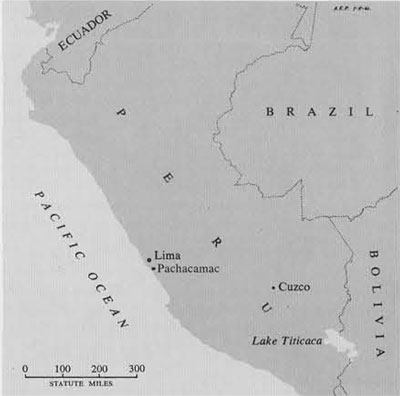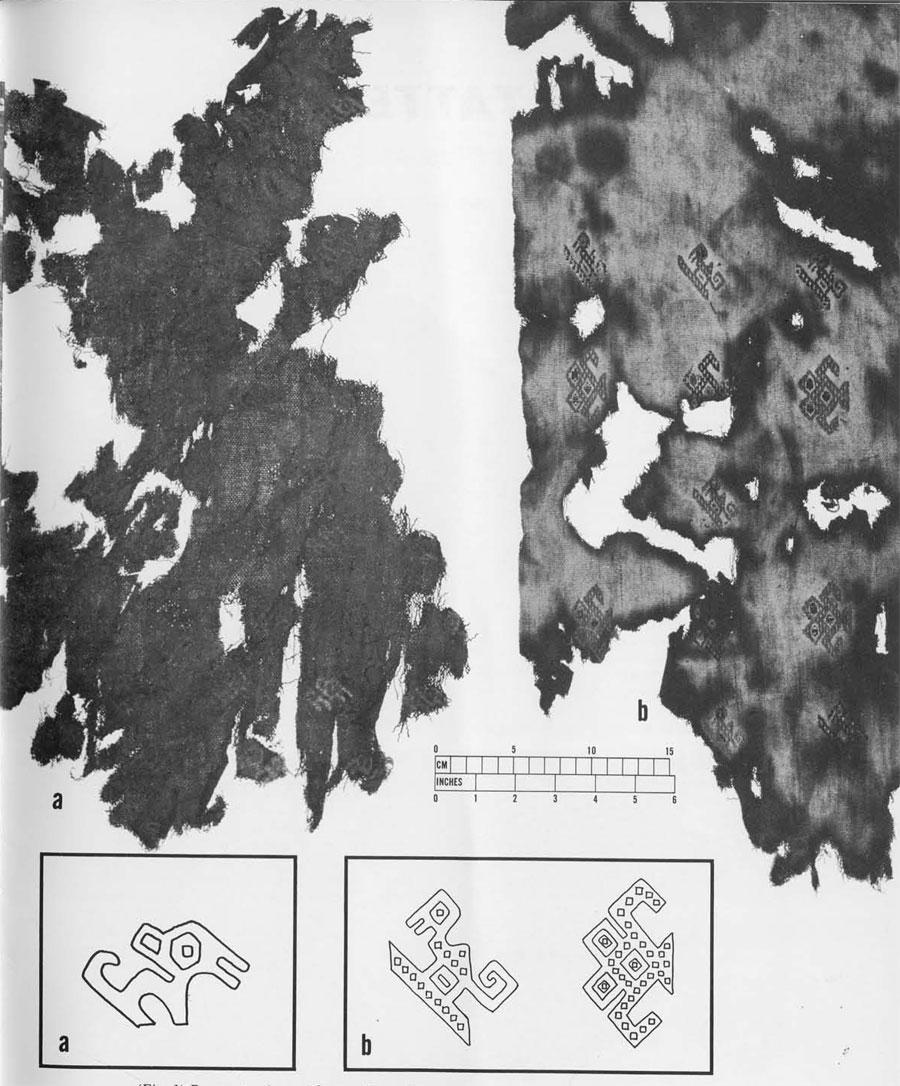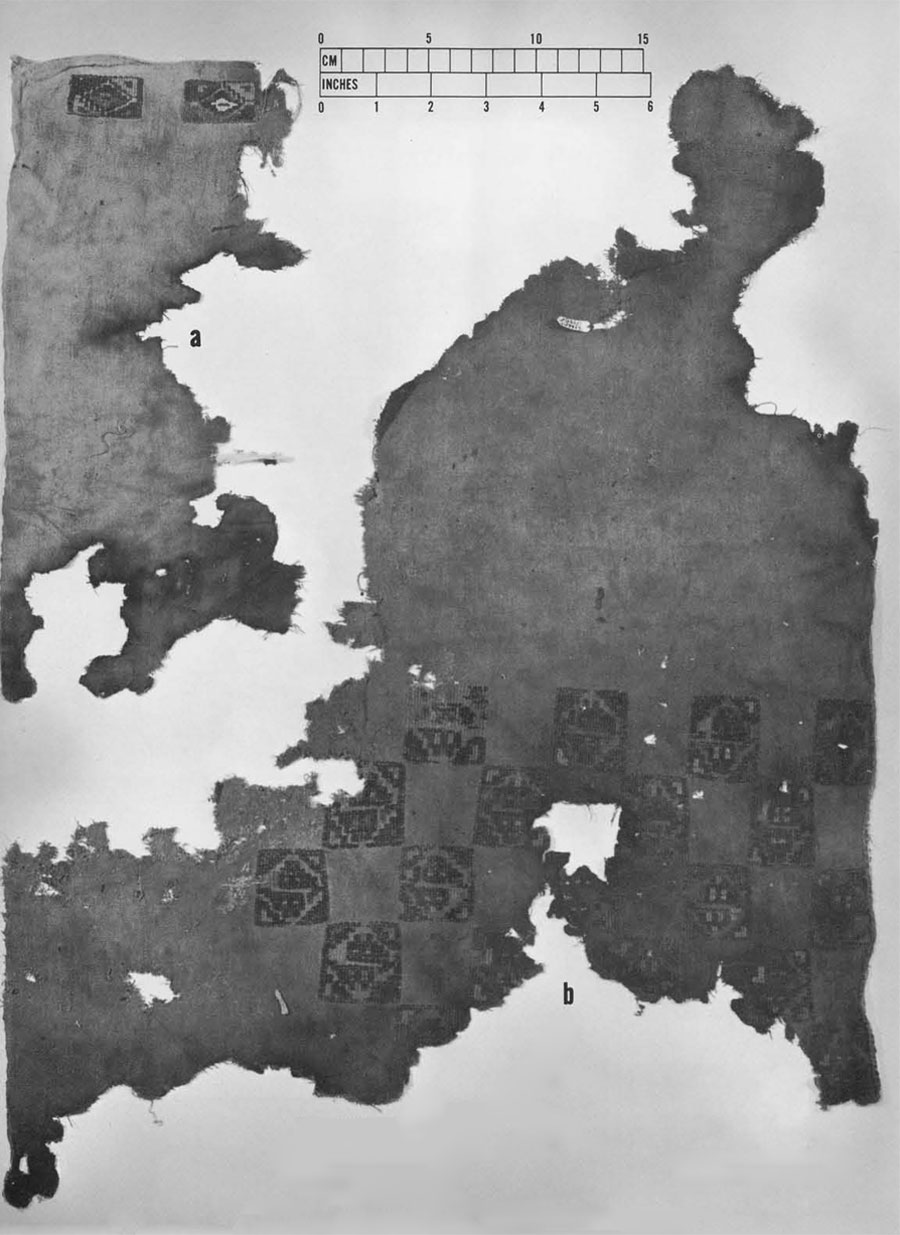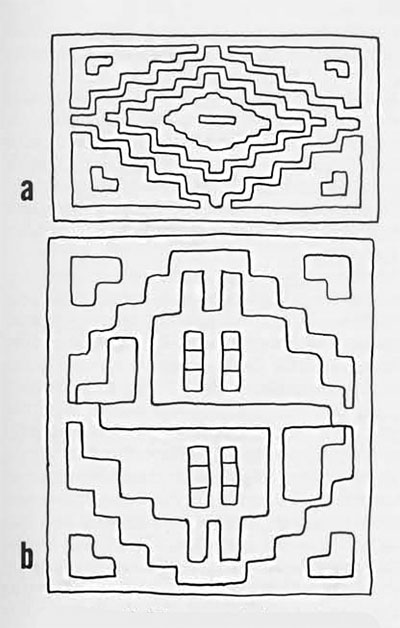 The making of reconstructions of various kinds constitutes a large part of any archaeologist’s work. The final aim of such reconstruction is an overall synthesis, which pictures the whole of an ancient civilization as this can be visualized on the grounds of a tremendous volume of amassed evidence. At the opposite end of this scale, providing the basic material for this larger picture, are all of the small piecings-together of the artifacts which represent the material culture of a particular civilization. These reconstructions make fragments of pottery, wood, metal, stone, or cloth into understandable objects or comprehensible forms. Especially in dealing with materials from areas where no written records have been found, as is true of pre-Columbian Peru, the groundwork becomes largely that of “deciphering” artifacts. Very few of these artifacts are recovered wholly intact; in fact, many are so fragmentary as to make dependable reconstruction impossible. Others can be made to take form, bit by bit, and yield considerable information.
The making of reconstructions of various kinds constitutes a large part of any archaeologist’s work. The final aim of such reconstruction is an overall synthesis, which pictures the whole of an ancient civilization as this can be visualized on the grounds of a tremendous volume of amassed evidence. At the opposite end of this scale, providing the basic material for this larger picture, are all of the small piecings-together of the artifacts which represent the material culture of a particular civilization. These reconstructions make fragments of pottery, wood, metal, stone, or cloth into understandable objects or comprehensible forms. Especially in dealing with materials from areas where no written records have been found, as is true of pre-Columbian Peru, the groundwork becomes largely that of “deciphering” artifacts. Very few of these artifacts are recovered wholly intact; in fact, many are so fragmentary as to make dependable reconstruction impossible. Others can be made to take form, bit by bit, and yield considerable information.
Many archaeologists, both volunteer and professional, have spent long hours sorting sherds and putting pots together, or in figuring out the original forms of wooden shafts or hafts for tools or weapons of stone and metal, and the bindings which held these in place. Few have worked with the rags which constitute most of the textile remains from archaeological sites, although this work can provide an equally fascinating occupation, or tedious chore, depending on one’s point of view. The results of these undertakings occasionally lead to major discoveries, long-sought explanations, connecting links or, rarely, some new, unexpected, or unforeseen occurrence. Usually the findings are humdrum: this or that familiar technique was used; designs or forms are like, or similar to, those found elsewhere; or, perhaps, weeks of painstaking work show just another piece which, alone, contributes next to nothing to current knowledge.
When working with textiles, worthwhile results are slower and harder to come by than when working with more durable materials. So much has been lost irrecoverably, so much more will be lost just in handling, that the forming of any adequate picture seems hopeless. In addition, learning the facts and skills essential to working with textiles requires, not only time and patience, but a good deal of independent, non-archaeological searching for the basic textile information, as well as acquiring satisfactory working techniques through extended practice.
Studying Peruvian textiles has certain advantages over studying archaeological textiles from most other areas. Great quantities of fabrics were produced in ancient Peru and, due largely to climatic conditions, many have been preserved, some in excellent condition. Also, both the burial practices and the spectacular nature of many of the cloths, have contributed toward the preservation of these fabrics. Both have been factors promoting interest in the textiles, through providing information useful in the interpreting of ancient Peruvian customs, and as a seemingly unlimited source of valuable display materials. However, these same factors have tended to focus attention on the unusual, especially the fabrics notable for their large size and elaborate and colorful ornamentation. Because there have been sufficient numbers of these, in good condition, to show off in museum cases, there has been little inclination to exhibit the run-of-the-mill specimens.
As a result, our information concerning Peruvian textiles has been confined, largely, to these show-pieces, for which, unfortunately, the provenience of their discovery seldom has been recorded. Compare, for example, the elaborate cloths displayed in the larger museums of Europe and America and shown in the illustrated books dealing with pre-Hispanic Peruvian artifacts with a few of the almost unknown, but well documented specimens constituting part of one of the more important collections extant, the University Museum’s Uhle collection from Pachacamac.

Museum Object Number a: 29664
Museum Object Number b: 29757
One little bundle of charred cloth, for instance, revealed, when carefully spread out (Fig. 1 a), approximately one-half inch high, embroidered in a simple diapered repeat on a plain brown cotton ground. The embroidery technique is not a common one among the Pachacamac fabrics with which this was found, nor are the two colors of the remaining wool embroidery yarns–a clear light green and a light russet. A third color has disappeared almost entirely; only a few bits of a brownish wool and the stitch holes in the fabric indicate its former presence. Each figure is in a single color and, even in this small brittle fragment of cloth, one can see (but not in the photograph) the familiar diagonal arrangement of the three hues, with each color repeated in regular sequence to produce a rhythmic diagonal color emphasis.
A second fragment (Fig. 1 b), in somewhat better condition than the preceding, displays a few other features. It has two different motives (Fig. 2 b) arranged in alternate rows, five rows in all. In each row the figures are alternately red with brown accents, and brown with red accents, the colors in the five rows producing a checkerboard effect through their alternating positions. Insofar as it is possible to judge, without seeing the work in progress, the figures were partly woven-in and partly embroidered. They average three-fourths to one inch in height and are in wool yarns on an unbleached-white cotton ground. Enough of this specimen remains to show the directions of the warp and weft parts of two lengths of fabric, presumable alike, joined together with a lengthwise seam sewed with whipping stitches. The woben width of one cloth is eighteen inches and the longest length remaining is approximately the same. On this section, parts of the two side selvages and one end selvage are intact. The patterning covers an area about nine and one-half by fourteen inches. It has not been centered on the cloth but has been placed near one corner. The same layout appears to have been used on both sections and, when these are seamed together, this leaves a plain central area, with patterns in the two outer corners. This is a typical Peruvian design arrangement.
Neither the patterns of this, nor of the preceding, are reversible; the designs are imperfect and overlapping threads, and thread ends are present on the undersurface of the cloth. The character of the motives of the two specimens differs markedly. The figures vary, but more important from the textile angle, is the difference in the delineation. In the first example, simple outlines have been used throughout. In the second, lattice-like outlines have been substituted wherever the design allowed the necessary space, and small interstices have been filled with the lattice.
Another type of patterning in which a small motive has been repeated, occurs in two versions, on two other fragments (Fig. 3 a, b). In both of these, the patterns are completely reversible, being alike on both faces of the fabrics. The motives consist of small rectangular figures (Fig. 4 a, b). Like the preceding, they are in wool, on unbleached-white cotton grounds. The manner in which they have been produced gibes them a tapestry-like appearance.

Museum Object Number: 29661A
The smaller of these fragments (Fig. 3 a) has only two repeats of a multicolored geometric design. The motive (Fig. 4 a ), which measures about one by one and three-fourth inches, has been embroidered. There are seven to eight colors in each repeat; of these, about half appear in both units. Exact color matching is no longer possible, due to deterioration, but certain distinctive colors are present. These are soft rose-reds, a bright blue, and an olive green, which have been used in addition to the more common white, gold-color, brown, buff, beige, and dull yellow. The two motives have been placed close to the remaining end and side selvages and it is possible that these continued as a border across the end of the cloth, beyond the edge of the fragment. There is no evidence of any additional design units having been present on the small remaining section of plain cloth.
The motives of the larger of these two fabrics (Figs. 3 b, 4 b) are nearly square in appearance, with dimensions varying from one and five-eighths to two and one-eighth inches. Each of these is in four colors: red, brown, yellow, and blue-green. Either the brown or the red predominates. Diagonal lines, which reverse midway, have been formed by the arrangement of the red and brown, the other colors in each square remaining subordinate. A system of weaving the major color areas and embroidering the minor appears to have been followed more or less consistently. The cloth fragment is twenty inches wide with bits of both side selvages intact. The major part of one of these selvages has an edge finish or reinforcement of tight, closely-set, whipping stitches. The patterning abuts against this selvage and extends two-thirds of the way across the fabric. The pattern unit appears to be complete and to be placed near a corner of the cloth. The latter cannot be confirmed, since no part of an adjacent end selvage remains, although there is a short section of selvage at the opposite end, thirteen and one-half inches from the patterning, where a bit of a second section of cloth has been attached, the two scraps of end selvage being sewed together with whipping stitches.
Taking a few minutes for review reveals that all of these examples have small repeat patterns produced by the addition, to a plain cotton ground, of wool yarns in contrasting colors, and that either or both weaving and embroidery have been used for this purpose. These designs were produced in three different manners: by using simple one-color outlines; by combining these with more complex, latticed outlines and similar filled-in areas, with added accents in a second color; by using designs which were filled in almost solidly, were polychrome, and were alike on both faces of the cloth, producing a tapestry-like effect. The figures, although all are conventional, vary from more or less natural representations to pure geometric forms (Figs. 2, 4). In each case where the fabric is intact, the patterned areas can be seen to cover only a limited and selected part of the total cloth. Where the repeats are sufficiently numerous, the color arrangement produces diagonal lines in the overall patterning.

Without going into detailed textile analyses, it is also possible to see, or to infer, that these are well-made fabrics, the work of experienced craftsmen. The yarns are smooth and evenly spun, the cloth is firm and the warps and wefts evenly spaced, the selvages are straight and smooth. The weaving follows the unusual Peruvian practice in which rectangular, four-selvage cloths were made, frequently about half a yard in width, or slightly wider. The wools have been dyed in many colors; the cottons, for these examples, used in their natural hues, unbleached and undyed, cream-white or brown. Patterning varies considerably, but certain established of preferred practices, such as selected locations for the designs on the fabric and the rhythmic color arrangements, can be noted. The working out of the pattern detail to produce the desired finished appearance, whether by means of sewing or weaving, shows close relationship to the design motive chosen. Cloths are sometimes seamed together, either lengthwise or crosswise, and, on occasion, selvage ends reinforced or finished with whipping stitches.
Most of these distinguishing features have been noted previously in reports dealing with larger and more showy Peruvian textiles; they might have been gleaned, equally well, from these four fragments. Only the judgments concerning the commonness or familiarity of the occurrence would require other sources of information. While, for the larger number of ancient Peruvian textiles, no data concerning the place from which each came have been preserved, excavation records are available for these rags. They were among the pieces which the late Dr. Max Uhle excavated at the famous Pachacamac religious center, near Lima. All came from the section of Pachacamac which Uhle designated in his Field Catalogue (1896-97) as “Burial Place Number One Beneath the Temple of Pachacamac.” They were classified by Uhle as belonging to the next to the oldest group of artifacts recovered from this site. On the basis of conservative archaeological estimates, this would place them as having been in use at about A.D. 1000.
Not only did these four cloths come from one very small area, two (Figs. 1 b, 2 a) were among the objects accompanying the same mummy. It seems certain, therefore, that the use of all of the techniques, designs, and procedures, which they introduce, was contemporary. Local production, however, cannot be claimed. Any one may have been brought in from outside, since Pachacamac was a religious center to which the early Spanish chroniclers tell us many pilgrims journeyed.
Uhle has described the four specimens respectively, as a “small piece of embroidered fabric ” a “remnant of embroidered cloth,” “another piece,” and an “embroidered piece of fabric from a wrapper, which was composed of different fragments.” While probing under magnification has led to the conclusion that some of the patterns were woven-in and not added as needlework after the cloth was made, all have the general appearance of embroideries. This brings up a question concerning Peruvian methods and practices in textile construction which invites further investigation. Also, Uhle’s comment that one “wrapper” was “composed of different fragments” suggests the probability, since the remnant in no way resembles a section of the Peruvian “patchwork” fabrics, that using made-over clothing or being buried with makeshift shrouds–including the indication of poverty–was not unknown in Pachacamac. This indicates, also, that the deterioration of these cloths did not begin with burial. Many may have been in rags and tatters prior to accompanying their pilgrim or religious recluse owners to the grave.
